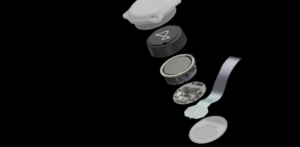Neuralink’s Brain Chip Empowers Individuals with Disabilities
Neuralink, Elon Musk’s brain-chip startup, conducted its first-ever livestream on Wednesday, showcasing a patient who had been implanted with a chip. The groundbreaking demonstration illustrated the individual using their mind to play chess online, marking a significant milestone in the advancement of brain-computer interface technology.

Noland Arbaugh, identified as the first recipient of a brain chip from Elon Musk‘s Neuralink, recently showcased its functionality in an online chess game. Musk had initially disclosed the successful implantation in January, but Arbaugh’s identity was revealed later. Following Musk’s update on Arbaugh’s positive recovery and ability to control a computer mouse with the chip, a video released by Neuralink demonstrates Arbaugh maneuvering the mouse solely through his thoughts. In the nine-minute footage, he engages in chess and manages to mute the laptop’s music, demonstrating the chip’s practical application.
Arbaugh, who is paralyzed below the shoulders due to a diving accident, is among those benefiting from the Neuralink brain chip. Designed to empower individuals with disabilities to communicate using their thoughts alone, the chip holds immense promise.
— Neuralink (@neuralink) March 20, 2024
First Neuralink Recipient Masters Chess with Mind-Controlled Chip
Elon Musk, speaking at the launch, envisioned a future where individuals like Stephen Hawking could communicate at speeds surpassing even the fastest typists or auctioneers. This ambitious goal underscores the transformative potential of Neuralink’s technology in enhancing the lives of those with physical limitations.
In the video, Arbaugh recounts his experience of getting the chip implanted, describing the surgery as remarkably straightforward. He mentions being discharged from the hospital just a day after the procedure with no cognitive impairments. Demonstrating the chip’s capabilities, Arbaugh highlights its profound impact on his life, particularly in activities like chess, expressing gratitude for the newfound abilities it has unlocked.

Furthermore, Arbaugh sheds light on the process leading up to this point, suggesting his collaboration with Neuralink in distinguishing between what he terms as imagined movements and attempted movements. Initially relying on attempted movements, he gradually transitioned to utilizing imagined movements, which align with how the chip operates. Arbaugh likens this process to channeling the Force from Star Wars to manipulate the cursor. For those curious about the process, Neuralink offers a version of it for exploration on their website.










